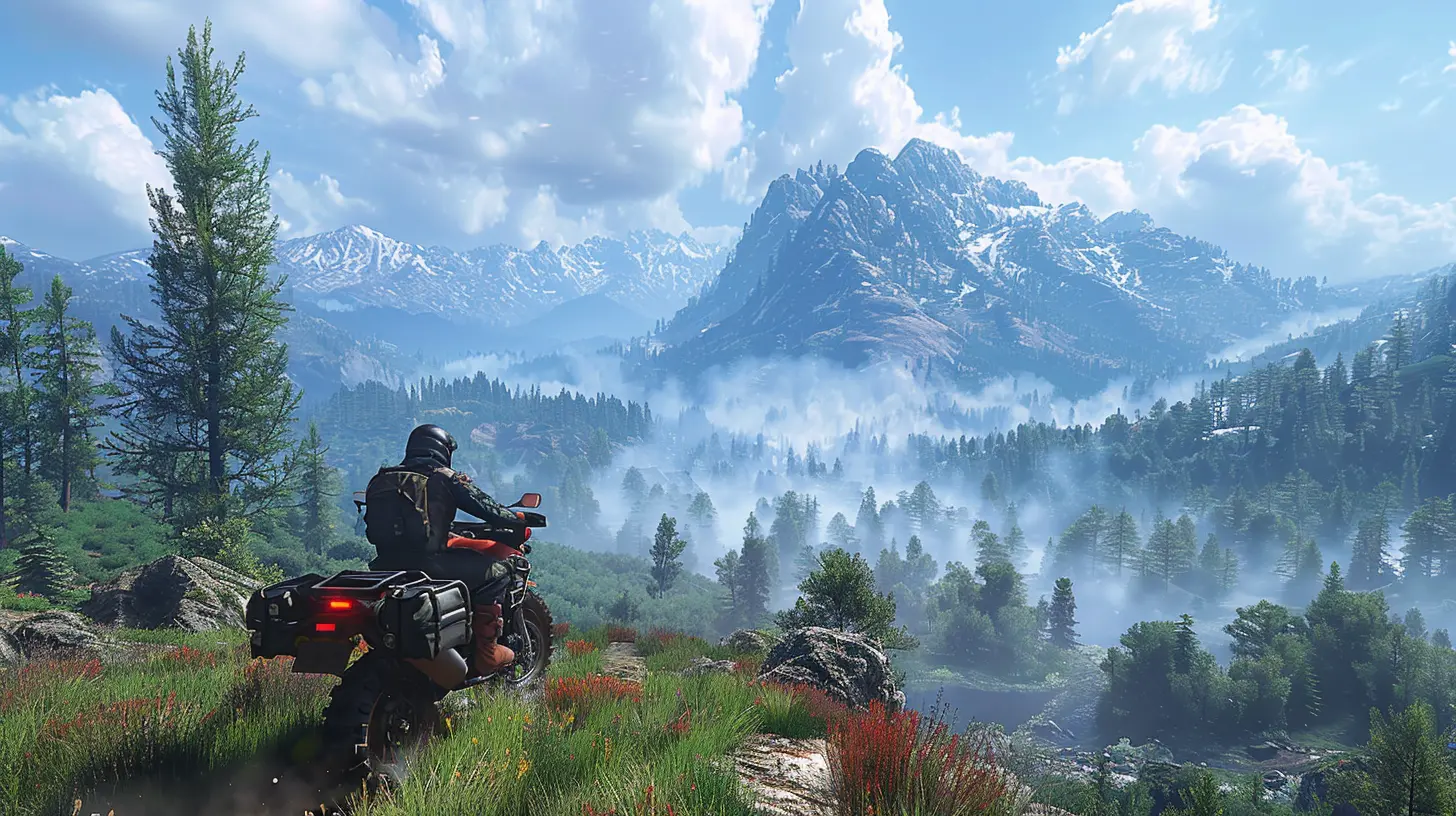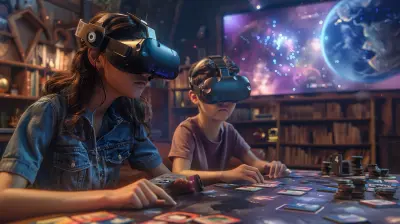4 March 2025
Picture this: You're immersed in a sprawling, gorgeous open world, hunting for treasure or chasing baddies. And then it happens—a random NPC (non-playable character) casually strolls into a wall and keeps walking like they forgot how life works. Seriously? Nothing breaks the illusion of an epic open-world game faster than poorly designed AI.
But here’s the thing: Creating convincing AI in open-world games requires some serious elbow grease, a dash of wizardry, and a mountain of patience. Game developers aren’t just slapping together code; they’re trying to mimic realistic human behavior in a virtual world, and let me tell you—it’s no walk in the park. Let’s dive deep into why this is such a Herculean task and why some games nail it while others flop harder than a fish out of water. 
What Even Is Open-World AI?
Before we get ahead of ourselves, let’s make sure we’re on the same page. When we talk about AI in open-world games, we’re talking about the systems that make NPCs, enemies, and even animals behave in believable ways. Think about Red Dead Redemption 2’s NPCs going about their day—fishing, arguing, or tending to their farms without you even interacting with them. That’s AI in action.Now, keep in mind, AI isn’t just about enemies who shoot at you with pinpoint accuracy (looking at you, Call of Duty). It’s about creating a living, breathing world—not a sterile one where characters behave like lifeless robots. But that’s easier said than done, and here’s why. 
The "Too Smart Is Dumb" Dilemma
Let’s get this out of the way: AI that’s too smart is almost as bad as AI that’s just plain dumb. Imagine you’re trying to sneak up on an enemy, and they somehow know your exact location because the AI decided, “Nah, I’m omniscient today.” Frustrating, right?The trick is finding that sweet spot. AI needs to feel intelligent without being psychic. For example, enemies should hear your footsteps when they’re close enough, but they shouldn’t have Spidey-senses that pinpoint you through walls. Balancing this is one of the biggest challenges in open-world games. 
Open Worlds = Open Messes
Linear games (like the Uncharted series) have it a little easier when designing AI. Why? Because the level design is tightly controlled. The developers know where you’ll be at any given moment, so the AI doesn’t need to account for every possible scenario.Open-world games, on the other hand? Oh boy, it's chaos. Players can approach objectives from literally any direction, interact with random NPCs, and even ignore main missions altogether. This unpredictability means developers have to make AI that works in countless scenarios.
And let’s not forget about the sheer size of open worlds. We’re talking miles of terrain, bustling cities, and untold numbers of NPCs—all of which need AI routines. It’s like trying to choreograph a flash mob where no one’s following the same playlist. Good luck with that. 
The "Idle NPC" Problem
Ever notice how in some games, NPCs just stand around like awkward mannequins until you talk to them? That’s a dead giveaway of lazy or outdated AI design. In a believable open world, NPCs should have lives of their own.Games like Grand Theft Auto V and Cyberpunk 2077 try to address this by giving NPCs daily schedules. You’ll see them commuting to work, grabbing a bite to eat, or just hanging out. But even then, there’s a layer of smoke and mirrors. If you follow one of these NPCs for too long, you might notice they eventually loop back into the same routine. Immersion shattered.
AI and Emergent Gameplay
One of the coolest things about open-world games is emergent gameplay—that "holy crap, did that just happen?" moment when the game's systems interact in unexpected ways. For example, in The Legend of Zelda: Breath of the Wild, an enemy might accidentally blow themselves up because of a poorly-timed fire arrow. That’s not scripted—that’s emergent AI doing its thing.But this kind of gameplay requires AI systems that can adapt on the fly. Developers have to create rules and behaviors that allow for endless possibilities without breaking the game. It’s like building a Jenga tower and hoping it doesn’t collapse under all the weight you’re piling on.
The Struggle with Pathfinding
Ah, pathfinding. The bane of AI developers everywhere. You know those moments when an NPC can’t figure out how to walk around a chair? That’s bad pathfinding.Now imagine scaling that up to an open-world game with dense forests, intricate cities, and sprawling deserts. The AI has to navigate all of that without getting stuck or doing something dumb. Games like Skyrim often struggle with this, leading to hilarious moments where followers get lost halfway to their destination.
Modern games use advanced algorithms to make NPCs navigate more intelligently, but it’s far from perfect. Remember, the AI isn’t “thinking.” It’s just following a set of instructions, which makes creating fluid, natural movement incredibly tricky.
Balancing Realism and Performance
Real talk: Even the most cutting-edge AI systems have limitations, and a lot of that comes down to hardware. Creating hyper-realistic AI is all well and good, but if it makes the game chug harder than your PC trying to run a poorly optimized port, it’s not worth it.Developers constantly have to make trade-offs between realism and performance. For instance, instead of programming every NPC to react uniquely, developers might create a bunch of archetypes (like “shopkeeper” or “guard”) and reuse them across the game. It’s efficient, but it can make the world feel less dynamic if players start noticing the patterns.
Player Expectations Are Brutal
Gamers are a picky bunch—we want everything to be perfect, right? But designing convincing AI comes with a ton of challenges that the average player just doesn’t see. We expect NPCs to feel alive, enemies to act smart, and animals to behave realistically. And, oh yeah, we’d like all of that without gameplay-breaking bugs, please.It’s a tall order, and not every game can deliver. But hey, when a game gets it right, like Red Dead Redemption 2 or The Witcher 3, it sets a gold standard that other developers strive to reach.
The Future of Open-World AI
So, where do we go from here? With advances in machine learning and neural networks, the future of AI in open-world games looks pretty exciting. Developers are experimenting with systems that learn and adapt to player behavior, which could make NPCs feel even more lifelike.That said, we’re still a long way from achieving true, human-like AI in games. But who knows? Maybe one day, an NPC will call you out for ghosting them after you promised to help with a side quest. Now that would be next-level immersion.
Wrapping It Up
Designing convincing AI in open-world games is like trying to tame a wild horse—it’s unpredictable, messy, and sometimes just plain impossible. Between balancing realism and performance, dealing with unpredictable player behavior, and making sure the world doesn’t break under its own weight, developers have their work cut out for them.But hey, the challenges are what make the triumphs so satisfying. The next time you see an NPC in a game convincingly going about their day, take a moment to appreciate the behind-the-scenes magic that made it happen.
And if you catch an NPC walking into a wall? Well, just give them a break. They’re doing their best, OK?









Brittany Heath
Designing convincing AI in open-world games is like teaching a cat to fetch—fun in theory, but mostly they just stare at you like you’re the crazy one. Let's just hope they don't start charging for their services when they finally figure it out!
April 8, 2025 at 4:09 AM